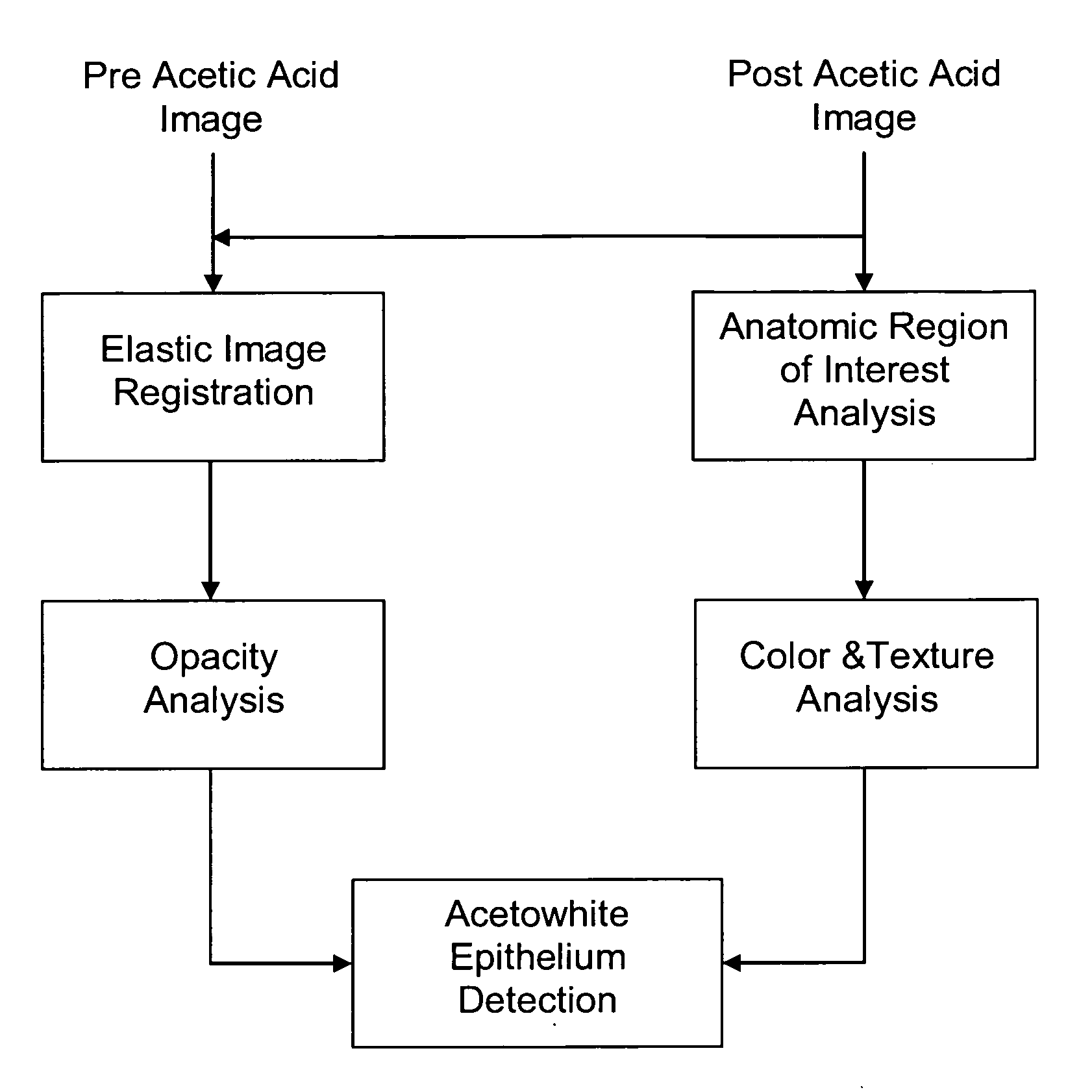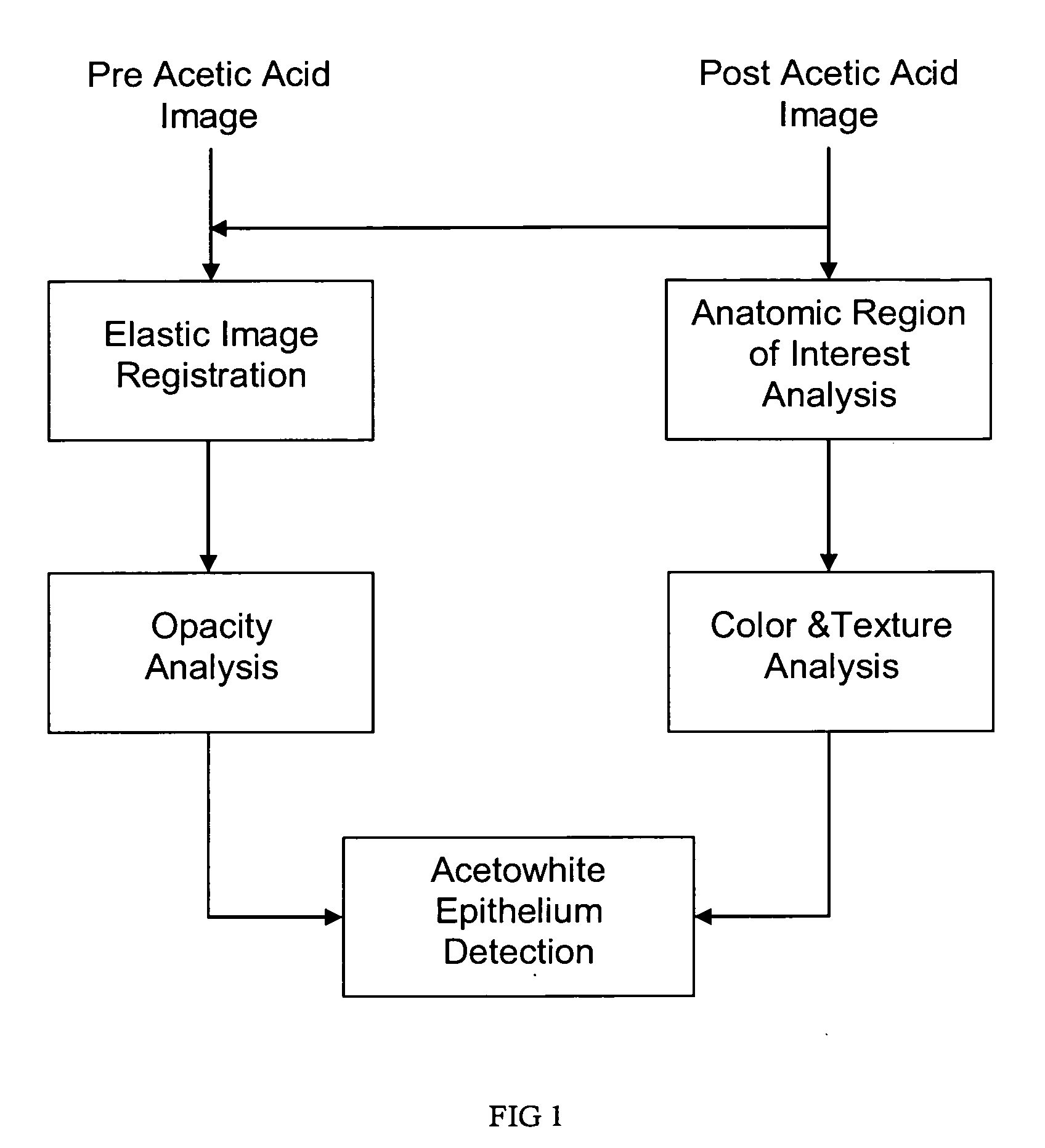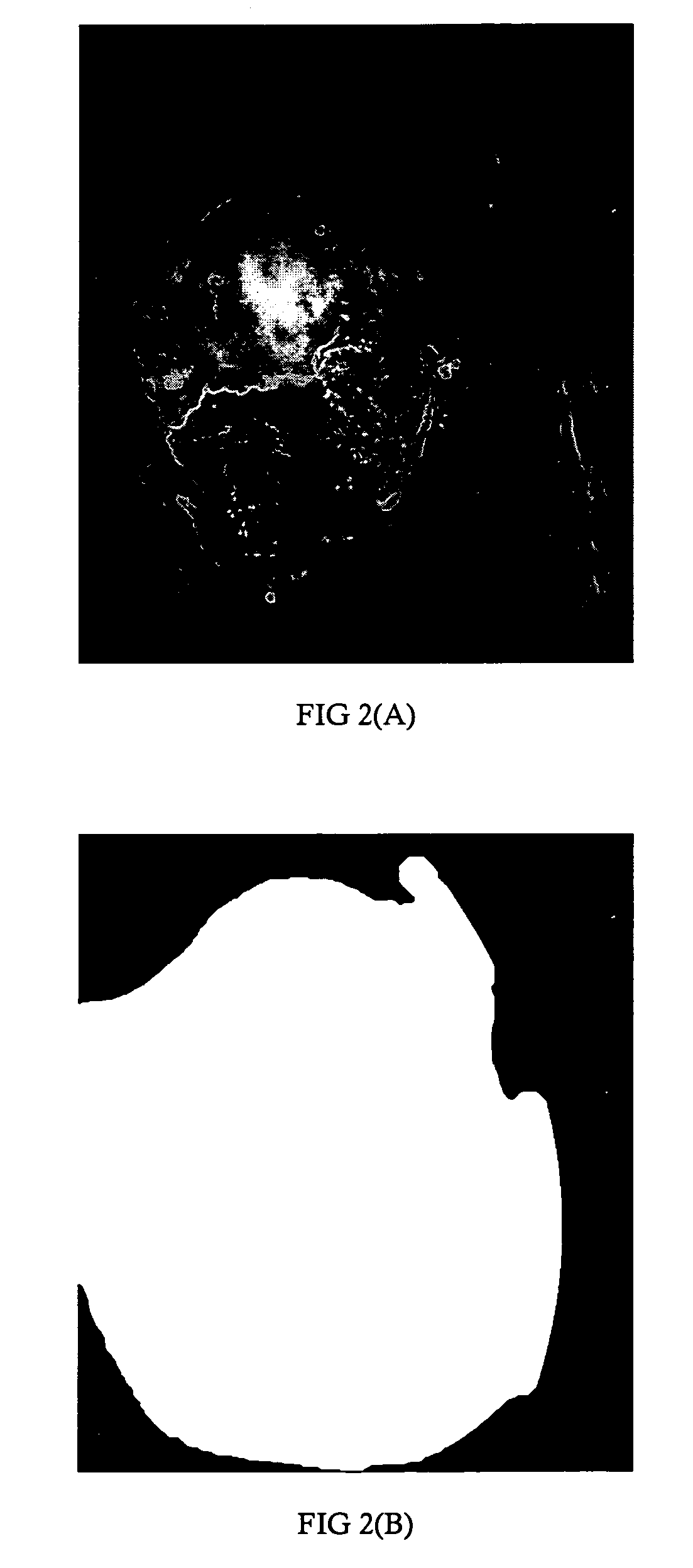Computerized image analysis for acetic acid induced Cervical Intraepithelial Neoplasia
a technology of intraepithelial neoplasia and computerized image analysis, which is applied in the field of medical imaging and image processing, can solve the problems of false positives, difficult automated detection of acetowhite epithelial depicted on cervical images, and large false positives, and achieve high intensity variation, and controllable local contrast enhancement
- Summary
- Abstract
- Description
- Claims
- Application Information
AI Technical Summary
Benefits of technology
Problems solved by technology
Method used
Image
Examples
Embodiment Construction
[0031]The present invention described herein and more fully below, comprises an automated image analysis system for quickly and efficiently detecting acetic acid induced intraepithelial lesions from surrounding tissue, and to characterize both color and opacity properties of acetowhite epithelium. FIG. 1 depicts a block diagram of the multi-step procedure of analyzing the acetowhite epithelium using a set of image processing algorithms.
1. Obtaining Pre Acetic Acid and Post Acetic Acid Images of the Cervix
[0032]Images of the cervix, before and after acetic acid application, are required. The images could, be images from a digital imager, such as a digital colposcope, or they could be digitized copies of film or other images. Prior to application of acetic acid (preferably 5% acetic acid), polarized and non-polarized high-resolution digital color images of the cervix are taken with a digital imager (colposcope). The post acetic acid image is considered to be the reference image.
[0033]...
PUM
 Login to View More
Login to View More Abstract
Description
Claims
Application Information
 Login to View More
Login to View More - R&D
- Intellectual Property
- Life Sciences
- Materials
- Tech Scout
- Unparalleled Data Quality
- Higher Quality Content
- 60% Fewer Hallucinations
Browse by: Latest US Patents, China's latest patents, Technical Efficacy Thesaurus, Application Domain, Technology Topic, Popular Technical Reports.
© 2025 PatSnap. All rights reserved.Legal|Privacy policy|Modern Slavery Act Transparency Statement|Sitemap|About US| Contact US: help@patsnap.com



